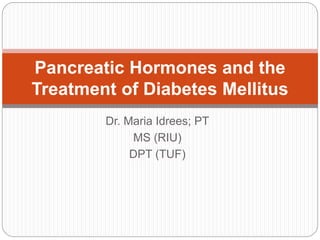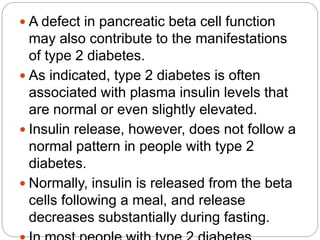This document discusses pancreatic hormones and their role in diabetes mellitus. It describes how the pancreas functions as both an exocrine and endocrine gland, secreting digestive enzymes and hormones like insulin and glucagon. Problems with insulin production cause diabetes mellitus, characterized by high blood glucose. The document outlines the roles of insulin and glucagon in regulating blood glucose levels, compares type 1 and type 2 diabetes, and discusses treatment approaches like insulin therapy, oral medications, diet/exercise, and new therapies.









































